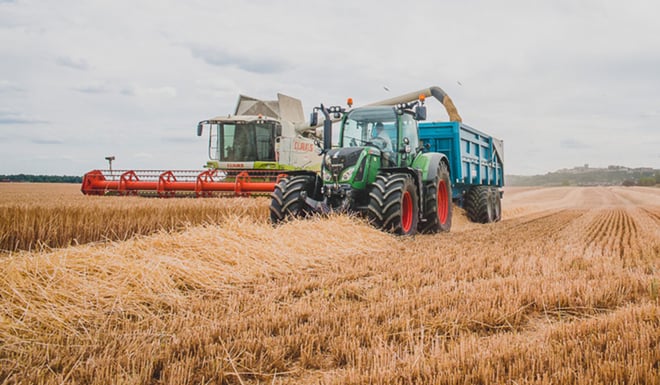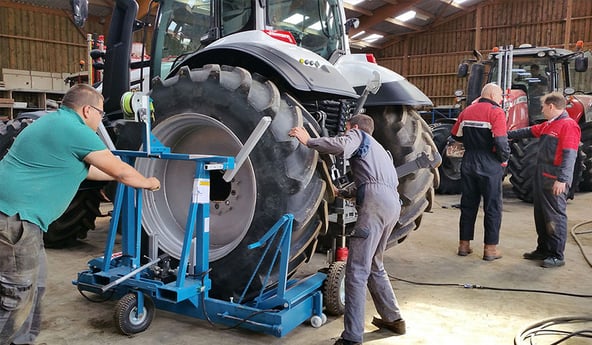A few months have gone by since the beginning of your agricultural campaign and the condition of your harvester tyres may have deteriorated.
For your safety, a tyre check-up is essential before the next harvest. This can be done in less than 10 minutes!
A first careful inspection of your tyres can be carried out when the tractor is stationary
- On the tyre sidewalls, the tread, the bead and the rim, carry out a visual inspection to check whether there has been any impact or anomaly and check for the presence of any foreign bodies.
- Ensure that there are no signs of corrosion on the bolts or any loose bolts.
- Check that your tyres’ valve caps are present. This will limit the risk of loss of airtightness.
- The condition of the tyre lugs must also be checked carefully. Irregular wear may have several causes: a slow puncture (loss of pressure) or misalignment.
- Check your tyre pressure compared to manufacturer recommendations. Ill-adapted pressure accentuates wear and increases your fuel consumption.
A second inspection can be carried out when the tractor is moving
- Incorrect mounting, a mechanical fault or inflation problem involving your tyre may lead to abnormal vibrations felt during driving.
- A steering problem noted during driving may stem from incorrect tyre pressure adjustment. For example, underinflation can lead to the tyre coming off the rim.
- Abnormal swing or bounce is often linked to over-inflation or a bad mass ratio.
If you identify one of these anomalies during your check-up, contact your tyre supplier to find out what action to take.
To take it a step further and increase the profitability of your farm, here is an ebook, downloadable for free, which explains the essential role of your tyres in the optimisation of your productivity.
Most people who read this article have also read some of the following articles:
- 5 essential techniques to optimise your agricultural tyres
- Info to help you know your agricultural tyres better and make savings
- Do you know how to read all of the indications on your tractor tyres?
- All the secrets of tractor tyres, agricultural tyres or farm tyres
- Understanding the manufacturer’s technical information on agricultural tyres
This information is intended only to make you aware of the technical and functional aspects of agricultural tires and their use. It does not allow you to make a judgment or a definitive conclusion on a given problem. Only your agricultural tire expert is able to make a technical assessment and take a final decision, case by case.
Leave a
commentary
Your email address will not be published.
Required fields are indicated with *








